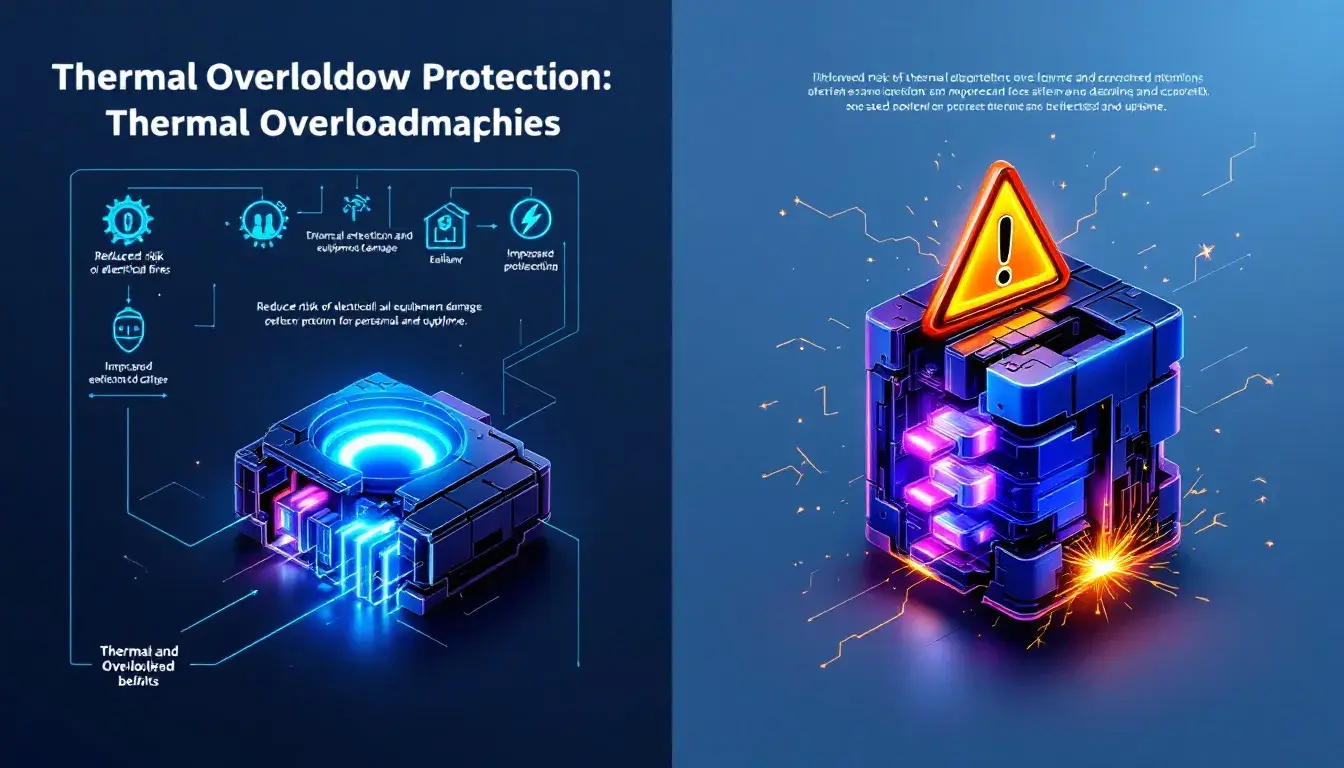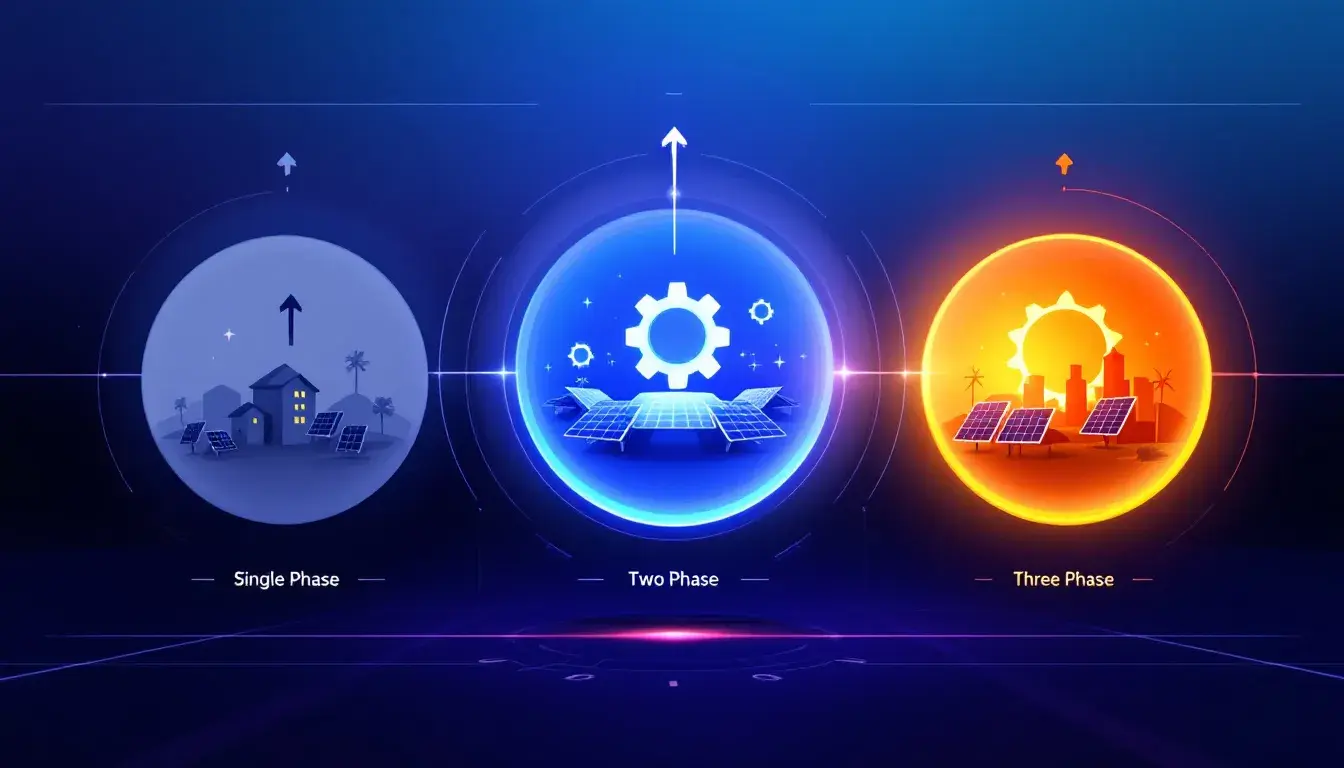Top Advantages of a 3 Phase PV Inverter for Your Solar System
Table of Contents
ToggleA 3 phase PV inverter is crucial for large-scale solar systems. It converts the DC power from your solar panels into a more stable, efficient three-phase AC. But what makes it stand out compared to single-phase inverters and why should you consider it?
Key Takeaways
- Three-phase PV inverters provide cleaner, more stable power and are essential for large-scale solar systems due to their ability to handle higher loads, making them suitable for commercial and industrial applications.
- The key differences between three-phase and single-phase inverters include the capacity for higher current ratings and the requirement for three wires for power transmission, leading to improved efficiency and reliability.
- Three-phase power offers significant advantages for solar systems, including higher capacity, stable electricity flow, reduced energy bills, and greater flexibility in integrating high-energy devices.
Understanding 3 Phase PV Inverters
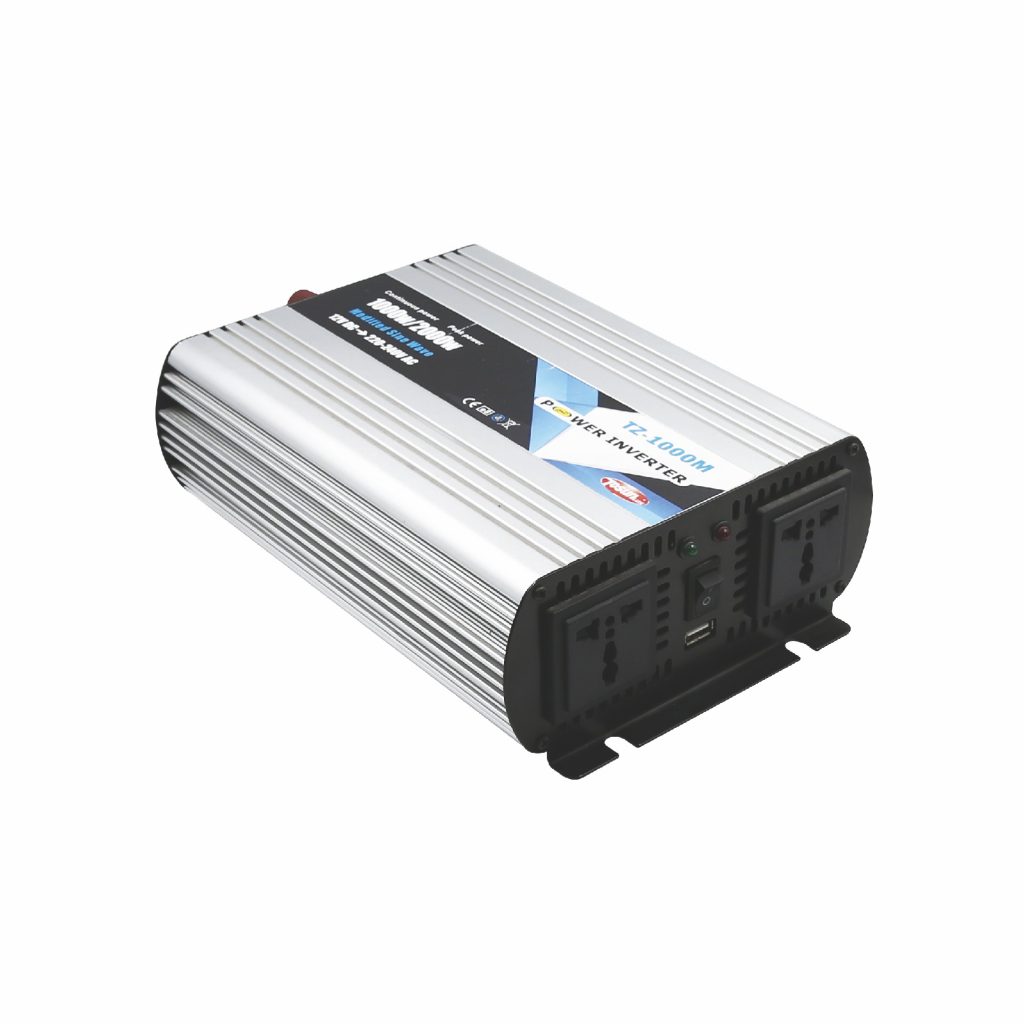
Three-phase PV inverters are essential for large solar and wind energy systems. They convert the DC power generated by solar panels into three-phase AC power, which is more stable and efficient. This makes them ideal for connecting renewable energy to the grid.
Key Features of Three-Phase PV Inverters
- Cleaner Power: These inverters reduce harmonics, providing cleaner and more stable electricity. This helps protect electrical equipment and extends its lifespan.
- Balanced Load Distribution: By using three wires instead of two, three-phase inverters distribute electricity more evenly, leading to a consistent power supply.
- Higher Power Capacity: Unlike single-phase inverters, which are suitable for homes, three-phase inverters can handle much larger power loads. This makes them perfect for commercial and industrial use.
- Efficiency: They ensure that the energy from solar panels is not only converted but also used efficiently, reducing energy waste.
Why Choose Three-Phase Inverters?
- Commercial and Industrial Use: These inverters are designed for high power demands, such as in factories or large offices. They can support heavy machinery, air conditioners, and pumps.
- Higher Current Ratings: They can manage higher currents, which is crucial for larger installations.
- Reliability: Equipped with features like LCD displays for easy monitoring, they are built to withstand tough conditions, ensuring long-term performance.
In summary, three-phase PV inverters are not just about converting DC to AC power. They play a vital role in ensuring that the energy produced is clean, stable, and efficiently distributed, making them indispensable
Applications of Three Phase PV Inverters
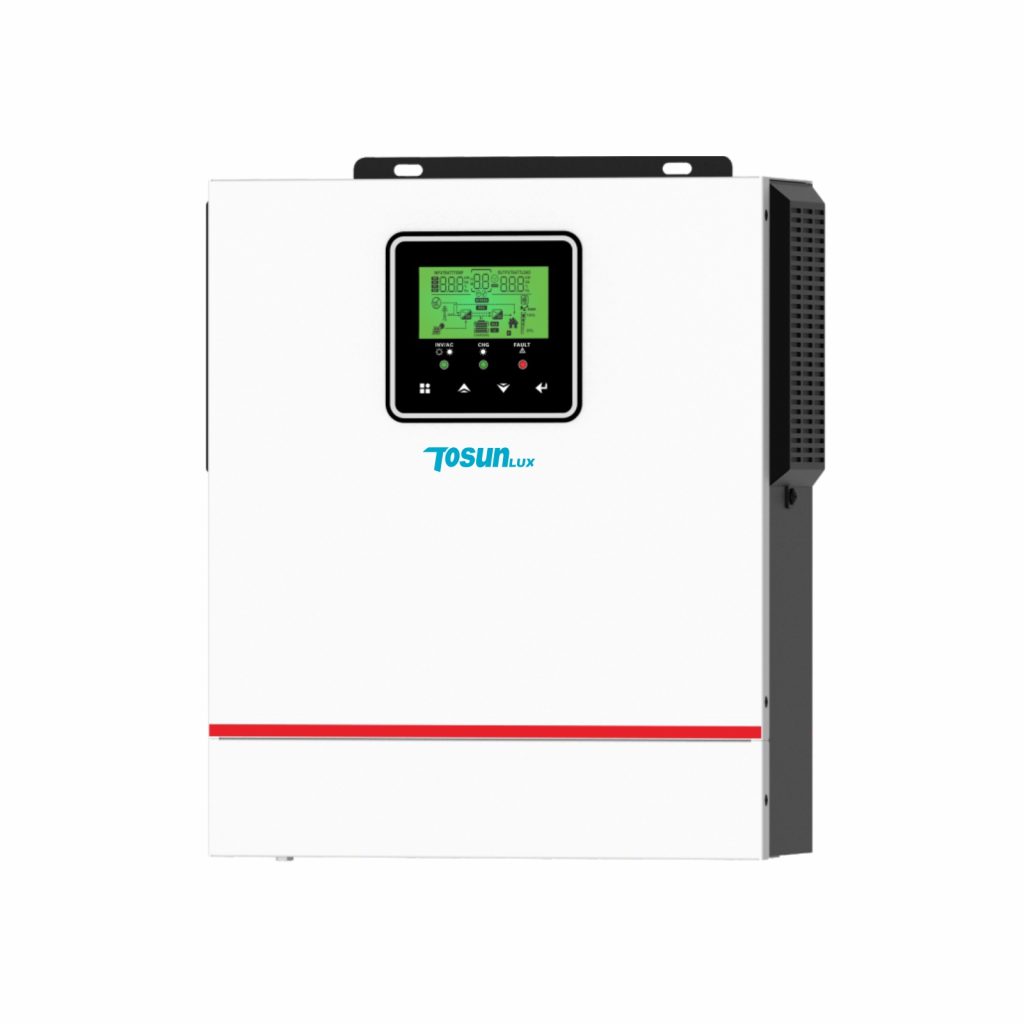
Three-phase PV inverters are powerful tools used in various settings. Here’s a simple breakdown of where and why they are used:
- Commercial and Industrial Buildings: These inverters are perfect for large spaces like factories and warehouses. They can handle high power needs, making them ideal for running heavy machinery, air conditioners, and pumps. For example, a three-phase inverter can support equipment that requires up to 100 kW of power, which is essential for big operations.
- Reliability and Durability: Inverters with features like LCD displays help monitor performance and ensure reliability. They are built to last, even in challenging environments, protecting the system from potential damage.
- Small Businesses: Even smaller companies can benefit from these inverters. They provide a stable power supply, which is crucial for maintaining operations without interruptions.
- Energy Efficiency: These inverters make sure that the energy from solar panels is used effectively, reducing waste and saving on energy bills.
In summary, three-phase PV inverters are versatile and reliable, making them an excellent choice for anyone looking to manage high energy demands efficiently. Whether for a large industrial facility or a small business, these inverters offer the power and flexibility needed to support various applications.
What is the Difference Between Three Phase and Single Phase Inverter?
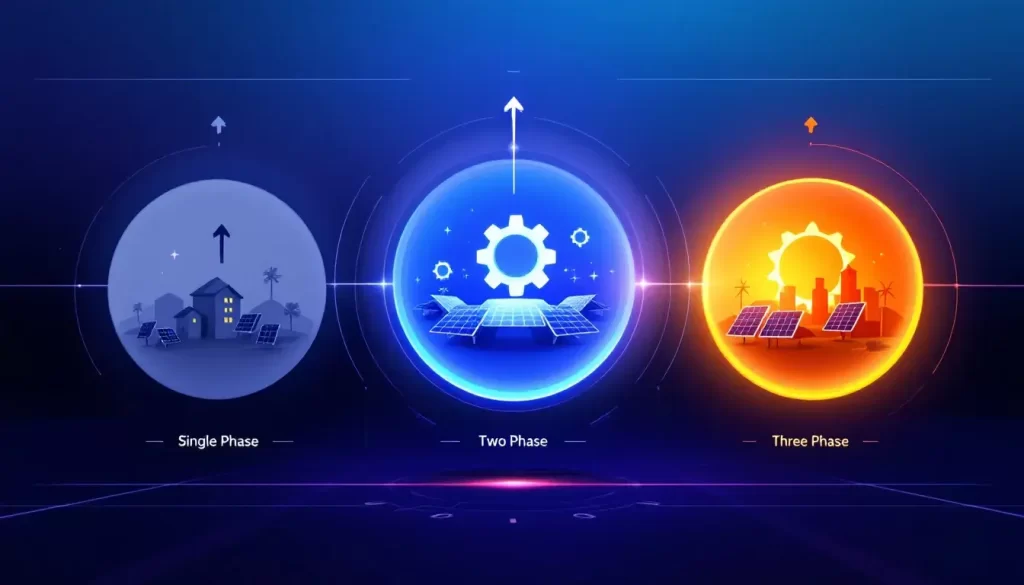
| Feature | Three Phase Inverter | Single Phase Inverter |
|---|---|---|
| Conversion Process | Converts DC from solar panels into three-phase AC | Produces single-phase AC from DC |
| Wiring Requirements | Requires at least three wires for power transmission | Requires only two wires for power transmission |
| Power Output Consistency | Delivers more consistent power output | Less consistent power output |
| Capacity | Manages significantly higher loads, suitable for commercial use | Generally limited to a maximum capacity of around 5 kW |
| Applications | Ideal for larger appliances and industrial equipment | Commonly used in residential properties |
| Efficiency | Offers efficiency gains in machinery operation | Less efficient for high-demand applications |
| Suitability | Perfect for businesses and industries with robust power needs | Suitable for homes and small |
Three-phase inverters convert DC from solar panels into more stable three-phase AC, requiring three wires, and are ideal for high-demand commercial settings due to their higher capacity and efficiency. Single-phase inverters convert DC to single-phase AC with two wires, suitable for residential use.
Summary
Three-phase PV inverters are essential for commercial and industrial applications, offering higher power load handling and consistent power output. Their robustness makes them ideal for managing heavy machinery or providing reliable power for small businesses. Choosing a three-phase inverter enhances solar system performance and reliability.
For tailored solutions and expert advice, contact TOSUNlux, a leading inverter manufacturer, to maximize your solar investment and join the sustainable energy revolution today
Tel: +86-577-88671000
E-mail: ceo@tosun.com
Skype: tosunelectric
Wechat: +86-139 6881 9286
WhatsApp: +86-139 0587 7291
Address: Room No.1001 Wenzhou Fortune Center,Station Road, Wenzhou, China
REQUEST A QUOTE
WhatsApp us
 : +86-139 0587 7291
: +86-139 0587 7291 English
English Español
Español Русский
Русский Français
Français العربية
العربية Português do Brasil
Português do Brasil Українська
Українська Türkçe
Türkçe Polski
Polski Nederlands
Nederlands Italiano
Italiano Bahasa Indonesia
Bahasa Indonesia हिन्दी
हिन्दी اردو
اردو አማርኛ
አማርኛ Հայերեն
Հայերեն ไทย
ไทย Монгол
Монгол فارسی
فارسی Shqip
Shqip Ελληνικά
Ελληνικά
